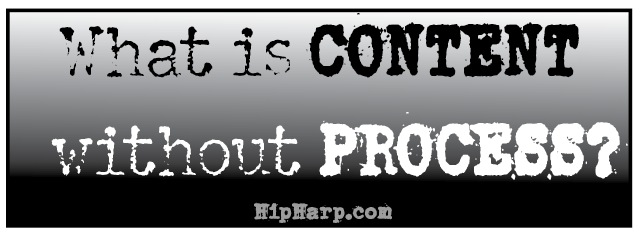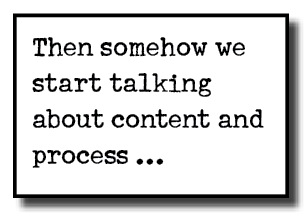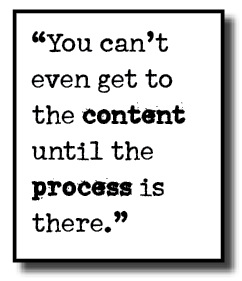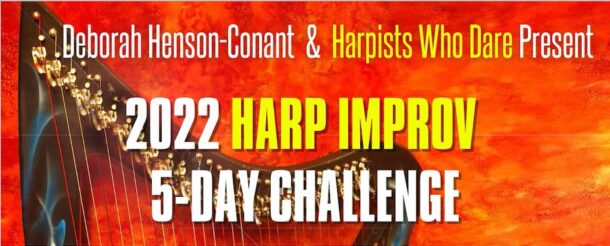 10AM my father-in-law calls from the road. As always, he introduces himself as “the outlaw” – the name I made up for him because Jonathan and I aren’t legally married.
10AM my father-in-law calls from the road. As always, he introduces himself as “the outlaw” – the name I made up for him because Jonathan and I aren’t legally married.
He says I sound bushy-tailed. I tell him I’m in the middle of my morning sweep – a quick cleanup of every room I ransacked yesterday.
He asks how long it takes. I tell him usually 2-5 minutes if I actually do it regularly … but today it’ll take longer. Jonathan’s been out-of-town, and I luxuriate into complete sloth when he’s gone, so today’s a bigger cleanup.
The outlaw is a therapist by profession and a concert pianist by love and history.
We ask about each others’ work, and admit we each feel overwhelmed, and how it’s easy to lose track of the fact that you’ve succeeded in what you set out to do, because sometimes that success generates such huge amounts of work.
 And then, somehow, we start talking about content and process. I say that I’m trying to teach my students to “create conducive conditions” in their work, so the work itself will be easy. I try to do the same … but I struggle with it.
And then, somehow, we start talking about content and process. I say that I’m trying to teach my students to “create conducive conditions” in their work, so the work itself will be easy. I try to do the same … but I struggle with it.
As I ‘front-load’ and set up the systems to make my work ‘easy’, I often hear a voice saying, “You’re just screwing around! Stop this and get to work!”
And when my systems make the work easy, I sometimes feel like I’m ‘cheating.’
(Yeah, I know, I probably need therapy. Kudos to the outlaw that he didn’t point that out.)
I’ve learned to identify that voice and try to lean into whatever I’m doing when I hear it, even though it still feels counterintuitive. I also tell my students to do that, and I build my courses on learning the underlying structure of music and then ‘creating conducive conditions’ to play with those structures.
And I’m always looking for the same kind of PROCESS when I learn something – which seems like every day, as I’m constantly having to learn new platforms, programs, applications.
And often feel frustrated as I’m trying to learn – as if there’s a huge disconnect. And I keep thinking that disconnect is INSIDE ME – like, I’m just stupid. But as the outlaw talks, I start thinking: is the disconnect in the PROCESS?
The outlaw tells me, “Look, if two people come in [to therapy] together and one is upset that the other scratches his ear, and they’re yelling at each other, the content – the ear-scratching – isn’t the issue. You can’t even get to the content until the process is there.”
I grab a couple of index cards and a blue sharpie and start scribbling what I can of what he says: “The way you practice music … the same in human relationships … until conditions are set that they can listen, they can’t hear content … process is the way the content is delivered but the process has to be there.”
 Something inside me slowly shifts and settles.
Something inside me slowly shifts and settles.
In the world of internet communication and marketing, I keep hearing that ‘content is everything’ yet I feel like a cultural immigrant on the web. I go to a website someone recommends and see all the ‘features’ of a product, but I can’t figure out what it IS.
I just don’t ‘get it.’ And I’m lost. All the content about how wonderful this product is and what it’ll do for me is just lost on me because I can’t figure out what it IS.
And worse yet, I feel stupid. The process for educating me isn’t there. I can’t get in the front door. The content is blocked.
So can we start talking about process and how we can help people connect to the content and really use the content that’s already there?
Wait … why am I asking? We just DID start that process.
Thanks, outlaw!
OUTTAKES:
Below are the things I wrote and then removed. Just for fun I thought I’d add them at the bottom – curious if they’re illuminating at all, or just belong elsewhere.
OUTTAKE #1:
I also tell my students to ‘create conducive conditions,’ and I build my courses on that idea (they’re courses in learning to spontaneously arrange-and-play music): I teach my students ONE simple compositional structure they can use over and over, and a set of simple musical variables they can use in that structure. It’s like a rudimentary composer’s toolbox – but you don’t need to be a ‘composer’ to play with the tools.
You can start playing and playing WITH any melody without having to ‘learn pieces.’ But you can only do that if you start by knowing the structure, the PROCESS you put that melody through. Once you figure that out, it’s ‘easy.’ You don’t immediately become Segovia, but immediately know how to begin expressing yourSELF at YOUR level of technical ability, so you have a starting place.
OUTTAKE #2:
I’ll write to the developer and ask if there’s a page that just describes what this thing actually IS, DOES, a page that includes a few simple stories of people USING it with a few ‘best practices’ they recommend.
I always ask for the same things:
- What IS this? What kind of thing is it? What kinds of activities does it replace or improve?
- What exactly does it DO?
- Can you tell me a few brief STORIES of real ways in which real people have used it?
- Can you outline the ‘BEST PRACTICES’ for using it?
The developer usually kindly writes back to me, but they have nothing like that. And I’m no longer willing to bite on the ‘Free Trial’ that costs me hours of exploration time only to discover that what it DOES isn’t what I NEED, something I could have known in 10 seconds by reading a paragraph about what it actually DOES.






Process and Content are essential but useless without Outcome If you focus on the outcome, you will get both the process and content right.
The good news is that you are doing this almost instinctively. I think it is a fundamental part of who you are.
Pete – tell me more what you mean … or where to find what you’ve already written about this (since I have a feeling maybe you have?). Thx! DHC
I like the overall concept. I think another element may be context. Process without context is useless and content without context is often meaningless. When I was young and music was a thing I thought would be cool to be able to do I didn’t get very far. I didn’t have context for what I wanted to get out of it, why I was really involved with it or how to go about making something of what I was learning. My notion of context and yours of process are closely aligned, I think, because it was, to me, like I was learning the notes and other technical bits but not how and why they worked in a whole song.
When I took up music again later in life, it came easier. I knew why I was doing it, what I wanted to get out of it. I had the patience to listen more closely and the ability to hear and work out what I was hearing. I had life experience which gave me more to write about. I came to think that learning to play music works better in a mix of learning and doing. Years of theory without the context of relating it to music doesn’t work any better than years of theory without the process of performing. If I could listen to a song I liked and figure out how to play it by using what I was learning, I learned better and got more joy. If I could apply the theory I learned and the listening skills to listening to what was in my head, I could go through a process of creating something new on paper and then in performance.
Music, by choice, isn’t my major in life (I may not have a major — I have too many minors!). I write a little, I play a little. I don’t play to a rhythm track or with other people or keep time myself enough. I listen to others’ music a lot more than to myself. But it all makes more sense to me now than it did when I had less context and no process. The three best classes I ever took on things related to music were not music theory classes. They were “Golden Ears” and some genre-centric, week-long NGSW classes that unlocked styles and made theory more approachable by not being directly about theory.
Thanks Scott – you are so right that CONTEXT is so often what I’m searching for — and seems like it’s often the thing that makes it possible for me to digest or access the content (wait – isn’t that some kind of bio-chemical principle, too?)
What is your understanding or definition of both “content” and “process”? What synonyms would you use – how would you explain each in one or two sentences? (For example, I see above that you might consider “structure” and/or “systems” as synonymous with “process” – is that true?). Sometimes the disconnect is in the definition, i.e. are we all talking about the same thing?
Not sure yet, Trista! That’s why this was so interesting to me and why all the comments are so fascinating. My conversation with the outlaw was really the first time I heard anyone else even acknowledge that content wasn’t the end-all-be-all and I’m loving that other people are pointing out yet other essential elements like the profound importance of CONTEXT and the focus-power of OUTCOME.
What’s YOUR take on it!
Thanks! – DHC
I really love that Scott and Pete brought up outcome and context, too. They seem to serve as good bridges between process and content. For me, examples of the difference & relationship between the two looks something like:
Content = the story
Process = What character am I in it (if I’m in it at all?). How does it relate to me?
Content = the physical body of a thing, how it looks on the outside
Process = the systems inside that make up that body
Content = a run
Process = how sleep, food, breathing, and movement affect that run
In short:
Content = here it is
Process = how does it apply